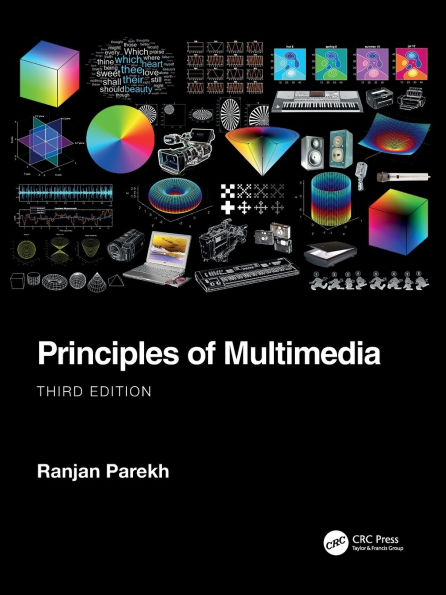Chapter 1 provides an overview of multimedia technology, including the definition, major characteristics, hardware, software, standards, technologies and relevant theorems with mathematical formulations. Chapter 2 covers text, including digital text representations, text editing and processing tools, text application areas and text file formats. Chapter 3 explores digital image input and output systems, image editing and processing tools, image application areas, image color management and image file formats. Chapter 4 discusses 2D and 3D graphics algorithms, transformation matrices, splines, fractals, vectors, projection application areas and graphics file formats. Chapter 5 covers audio, including digital audio input and output systems, audio editing and processing tools, audio application areas and audio file formats. Chapter 6 looks at video, including digital video input and output systems, video editing and processing tools, video application areas and video file formats. Chapter 7 focuses on animation, covering 2D and 3D animation algorithms, interpolations, modeling, texture mapping, lights, illumination models, camera, rendering, application areas and animation file formats. Finally, Chapter 8 covers compression, including lossless and lossy compression techniques, and various algorithms related to text image audio and video compression. Every chapter includes solved numerical problems, coding examples and references for further reading.
Including theoretical explanations, mathematical formulations, solved numerical problems and coding examples throughout, Principles of Multimedia is an ideal textbook for graduate and postgraduate students studying courses on image processing, speech and language processing, signal processing, video object detection and tracking, graphic design and modeling and related multimedia technologies.
Chapter 1 provides an overview of multimedia technology, including the definition, major characteristics, hardware, software, standards, technologies and relevant theorems with mathematical formulations. Chapter 2 covers text, including digital text representations, text editing and processing tools, text application areas and text file formats. Chapter 3 explores digital image input and output systems, image editing and processing tools, image application areas, image color management and image file formats. Chapter 4 discusses 2D and 3D graphics algorithms, transformation matrices, splines, fractals, vectors, projection application areas and graphics file formats. Chapter 5 covers audio, including digital audio input and output systems, audio editing and processing tools, audio application areas and audio file formats. Chapter 6 looks at video, including digital video input and output systems, video editing and processing tools, video application areas and video file formats. Chapter 7 focuses on animation, covering 2D and 3D animation algorithms, interpolations, modeling, texture mapping, lights, illumination models, camera, rendering, application areas and animation file formats. Finally, Chapter 8 covers compression, including lossless and lossy compression techniques, and various algorithms related to text image audio and video compression. Every chapter includes solved numerical problems, coding examples and references for further reading.
Including theoretical explanations, mathematical formulations, solved numerical problems and coding examples throughout, Principles of Multimedia is an ideal textbook for graduate and postgraduate students studying courses on image processing, speech and language processing, signal processing, video object detection and tracking, graphic design and modeling and related multimedia technologies.

Principles of Multimedia
520
Principles of Multimedia
520Paperback(3rd ed.)

Product Details
| ISBN-13: | 9781032961101 |
|---|---|
| Publisher: | CRC Press |
| Publication date: | 06/29/2025 |
| Edition description: | 3rd ed. |
| Pages: | 520 |
| Product dimensions: | 8.25(w) x 11.00(h) x (d) |
